There are many sightseeing spots in Kaminoyama city.
We introduce the main sightseeing spots.
Sightseeing
Zao Okama
Okama is the volkano crater lake of mt.Zao. Okama Crater with lake is the
most popular place in Zao in summertime, while Ice Monster is the best
in wintertime. The present crater was created by the explosion about 800
years ago. The comparison of emerald green-colored surface of the lake
and rough crater walls produces a mysterious atomsphere. This lake is also
called as "Goshikiko" (lake of five colors) since its surface
of emerald green changes its color according to the weather.
There is the free shuttle bus from Kaminoyama Onsen. In summer, it is very
cool there. Many people come to see Okama by Shinkansen.When it is fine,
we can go arround nearby. The green color of the surface of the lake is
very beautiful. But on going there, we may prepare one more jacket.
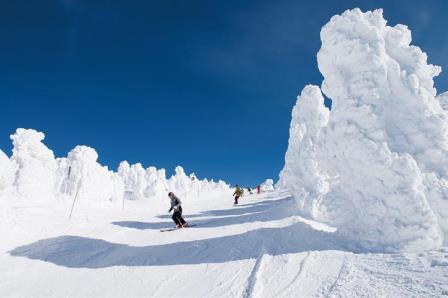
Juhyo (Ice Monster)
In the winter Zao Bodaira Kogen, "Juhyo (ice covered trees)"
are produced by the accretion of ice-snow blown by wind. It's an unusual
phenomenon worldwide, and is called Ice Monster. At Zao Liza World, visitors
can walk around Ice Monsters standing snow field with "Kanziki (folk
art snow shoes)". The beauty of mysterious Ice Monsters and panoramic
world below the snow field are unforgetttable. A special snow walking guide
leads the tour, so that even beginners can join easily.
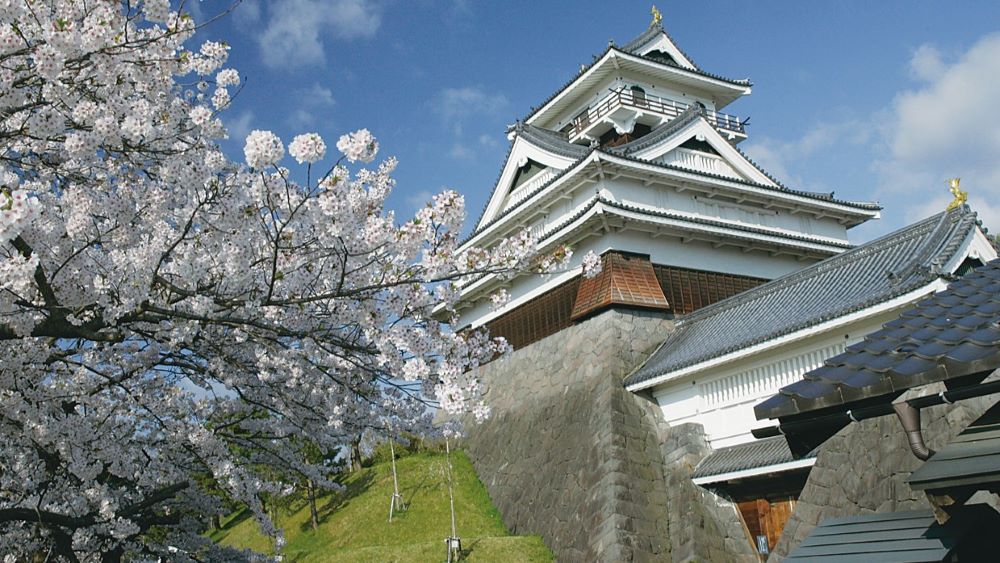
Kaminoyama Castle
Kaminoyama Castle marked the southern extent of the Mogami clan territory
in the Warring States of period (approx. 1467-1568), where dramatic events
of power struggles were occurred. The csstle was once torn down in 1692.
It was rebuilt in 1982 and is now open for public as a local museum with
audio and visual equipment. From the prospect point, the full view of Zao
moutain range and the town of Kaminoyama can be seen.
In spring, cherry blossom view near Kaminoyama Castle which is famous
as one of the best castles is popular. The view of cherry blossom trees
in full bloom seen from the prospect point is breathtaking. At night, you
can also enjoy the lightening up of cherry blossoms.
Samurai House
This was the family house of samurai who worked for the Kaminoyama castle
lord in Edo period.
There remaines 4 samurai houses near the castle. They are said to be built
more than 300 years ago. They have become a valuable heritage that reminds
the life of the samurai at that time.
You can see the inside of Miwa family house for a fee, and valuable materials
at that time are also on display. The guide will explane there.
Kyu-Sogabe family house is open for free, so we can see the garden and
inside of the house.
Narage Syuku
Narage Shuku was a key point on the Ushu Highway that was busy with honjin,
side honjin, inns, etc. as a Sankinkotai lodging station for various feudal
lords during the Edo period.
The old houses and stone bridges along the river are reminiscent of the
old days, and some of the old houses are open to the public.
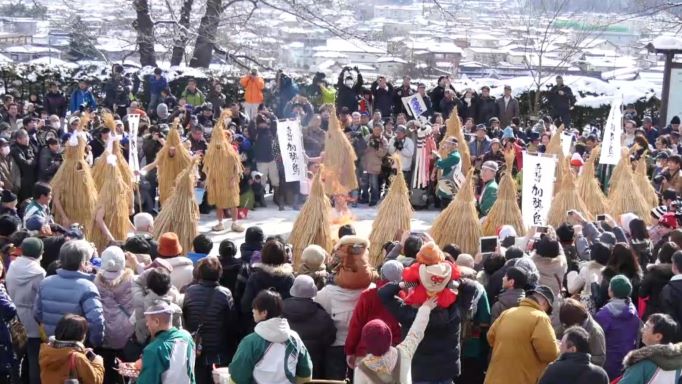
Kasedori Festival
Kasedori Festinal is a traditional folk event in Kaminoyama city that has
been handed down since Edo period, in which celebratory water is poured
from a pail on a young man wearing a kendai costume made of straw to pray
for a bountiful harvest and prosperous business.
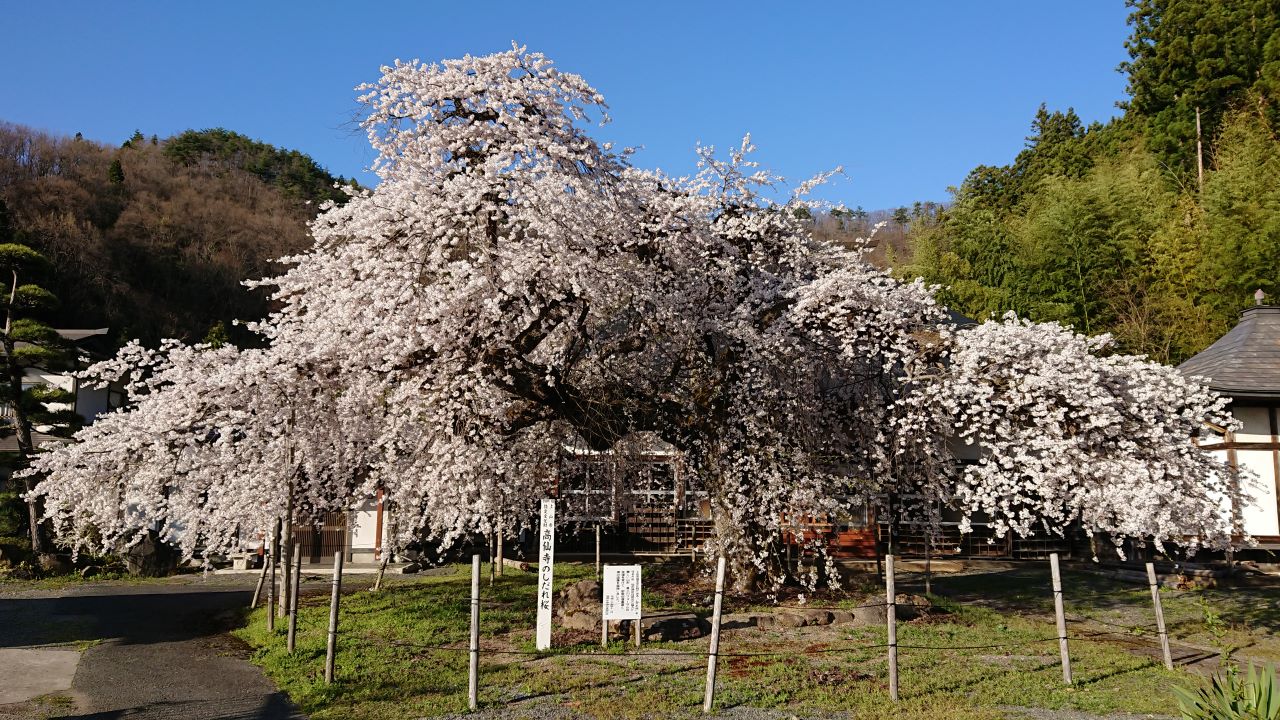
Kosen-ji Shidare Sakura
Kosen-ji Shidare Sakura is a 200-year-old tree in the precincts of Kosen-ji
Temple, with a height of about 10 m and branches extending to 13 m. It
is a designated cultural property and natural monument of the city.
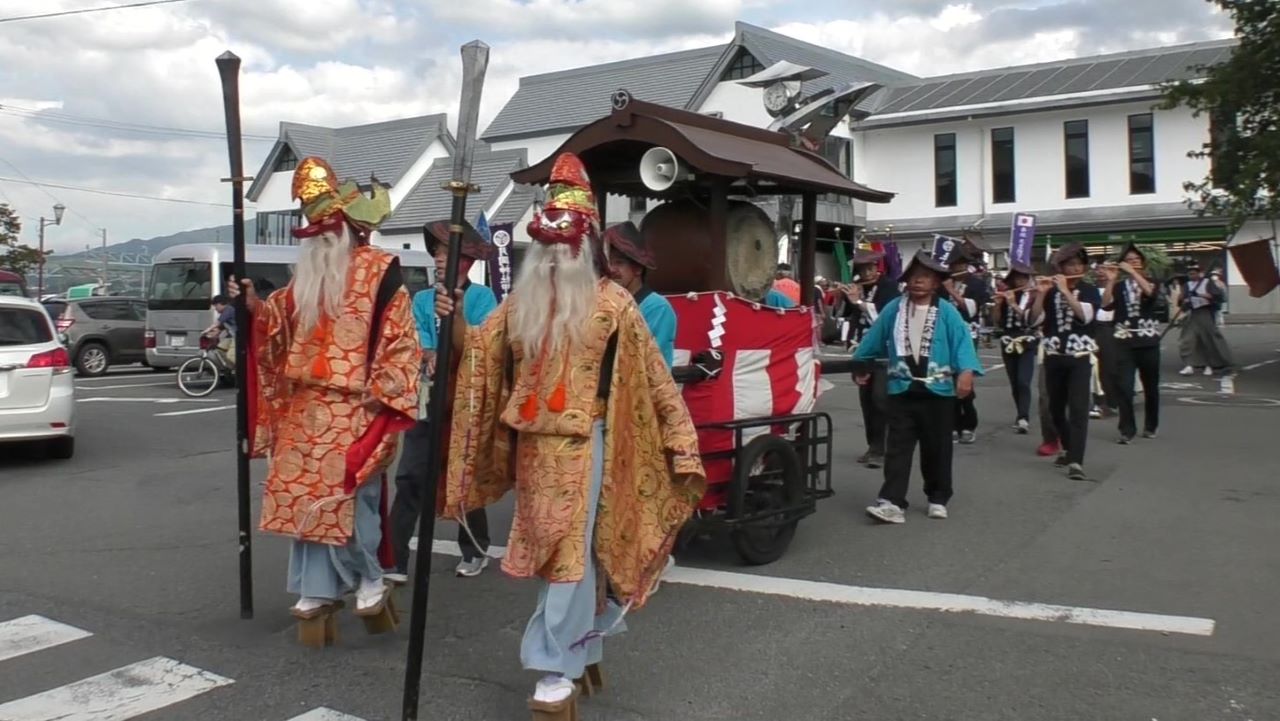
Sanja-Mikoshi Togyo-Gyoretsu Festival
Sanja-Mikoshi Togyo-Gyoretsu procession is a parade of the armored corps,
drum and fife corps and children of the three shirines in this city thought
the central shopping district.
This procession is the starting point of the Kaminoyama Festival, and it
is a precious procession like no other as a heritage that conyeys old history
and culture.
It biganin 1641 when Yoriyuki Toki, the lord of Kaminoyama Castle, celebrated
the birth of Iemitusu Tokugawa, the third shogun, and prayed for his military
luck , world peace and boutiful harvest.
The festival was abolished in 1871 with the abolition of the feudal system
in Japan, but it was inherited by the current procession in 1878.

Persimon Curtain
This is the scene that appears when red persimmons are dried outdoors.
Kaminoyama boasts the highest production volume of them in Japan.
This scenery can be seen from early November to early December mainly in
the Honjo area of the city. Dried persimmon curtains are a tradition that
colors Kaminoyama city in early winter.
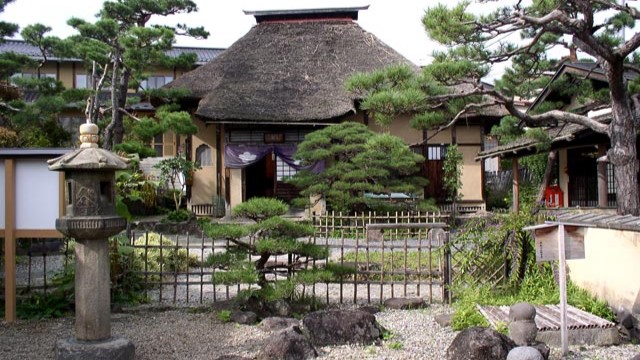
Harusame An
Harusame-an is known as the hermitage that Takuan priest, who is also known
for pickled takuan, loved and spent three years in Edo period.
Harusame-an was donated by Yoriyuki Toki, the lord of Kaminoyama Castle,
as a temporary residence for him, when Takuan priest of Daitoku-ji Temple
in Kyoto was exiled to Kaminoyama due to Shie incident. After spending
three years here, he was pardoned and returned to Edo, where he founded
Tokai-ji Temple. The current hermitage was rebuilt in 1953 after receiving
part of it from Tokai-ji Tmple. The thatched roof and garden are reminiscent
of the past, and there is also a tea room on the premises.
Kannon-ji Temple
Kannon-ji Temple is said to have been founded by the high priest Gyoki
during the reign of Emperor Shomu (724-748) of the Nara period. During
the Muromachi period, it became the 10th temple of Mogami 33 kannon. In
1625 during the Edo period, Kaminoyama prospered as a hot spring post town,
and the feudal lord Nomi-Matsudaira built a hot spring in front of Kannon-ji
Temple, called Shimo-no-yu, for the covenience of people in the city and
visitors to the three mountains of Dewa. This Kannon-ji Temle came to be
called "Kannon on the hot water". The current temple was rebuilt
in 1847 after it was destroyed by a large fire in the town.

Benten Garten (Rape field)
"Benten Garten" is a community farm near Mokichi Kinenkan-mae
Station in Kaminoyama City. There are photo spots such as a heart-shaped
field of rape blossoms and a heart frame decorated with flowers, so you
can enjoy taking pictures. You can alsosee the Zao mountain range from
the fields. You can take a nice photo in the yellow rape field with the
Zao mountain range in the background.
Blooming period of rape blossoms : Usually from late April to early May

Footbath
Kaminoyama Onsen has 5 footbaths nearby, so you can visit them all. You
can enjoy a footbath in a variety of scenery, from hills with castle and
ryokan towns to riversides. The great thing about footbaths is that even
couples and families can take a bath together.

Saito Mokichi Memorial Museum
Kaminoyama City is the birthplace of the poet Mokichi Saito.
In the Saito Mokichi Memorial Hall, materials that convey the lifelong
activities of Mokichi Saito and materials of writers who were friends with
him are diaplayed.
Isabella Bird Monument
British female explorer Isabella Bird traveled from Tokyo to Hokkaido for
about three months from June to September in 1878, and recorded in detail
the geography and customs of Japan in her "Unbeaten Tracks in Japan
(Nihon Okuchi Kiko)". It is a travelogue of a 47 year-old British
woman with a young Japanese interpreter, and there are many descriptions
of Yamagata Prefecture. She also stayed in Kaminoyama.
View from Hanasaki-yama Observatory
From Hanasaki-yama Observatory we can see a panoramic view of the Kaminoyama
city area, the countryside, and the Zao muntain range. This is an observatory
located halfway up Mt. Hanasaki, right behind the Hayama hot spring town.
It was established in 2009 by the Hayama Town Development Committee and
the Kaminoyama Hot Spring Inn Association, and was the first in the prefecture
to be certified as a "lover's sanctuary". It has become a popular
spot for couples and tourists.
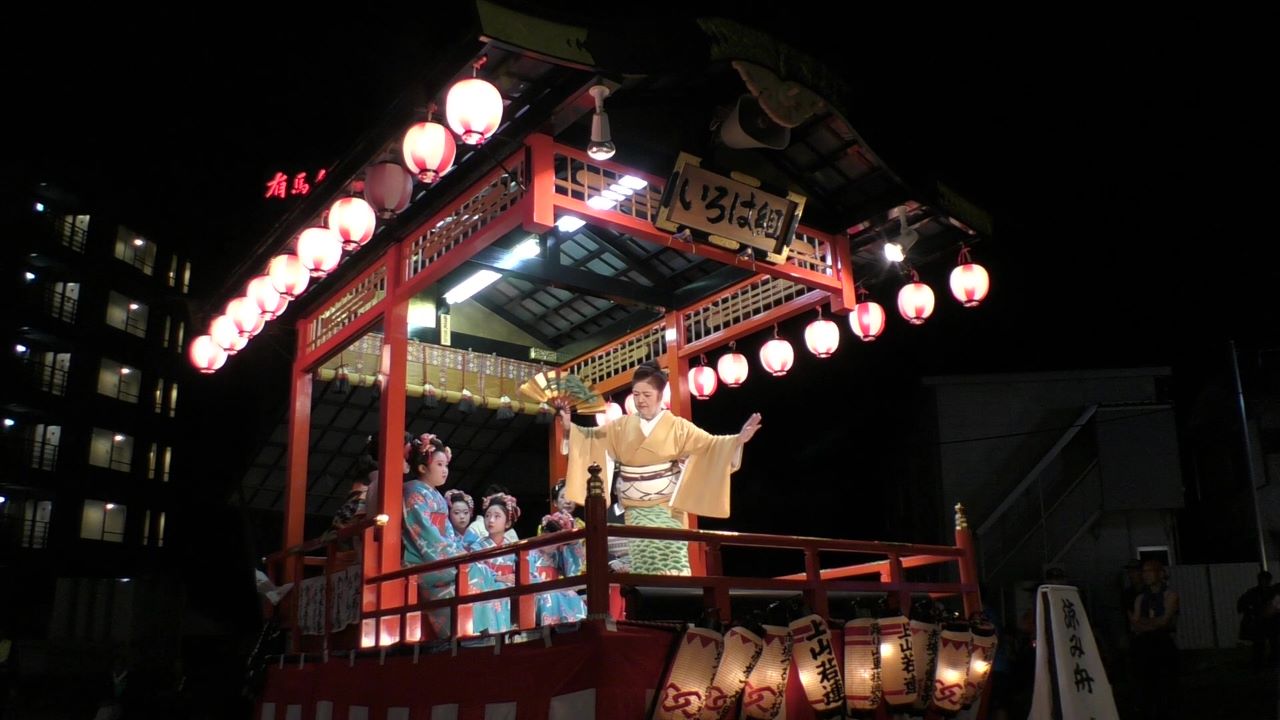
Odori-dashi Festival
The autumn festival "Odori Dashi" adds a touch of glamor to the
autumn festival of three shirins' festival, which are bustling as citizens'
festival. Numerous dances performed on the floats pulled by young people
in the city become a gorgeous human stage where the pullers and dancers
are in perfect harmony.

Harvest in Rice Field
Kaminoyama Onsen is rich in ingredients such as vegitables and special
rice grown in a land rich in nature. The delicious rice from Yamagata Prefecture
is also used in many inns in Kaminoyama Onsen. In Yamagata Prefecture,
rice such as "Haenuki", which is also used at convenience stores,
and new varieties such as "Tsuyahime"and "Yukiwakamaru"
are grown.

Hot Spring
Kaminoyama Onsen was founded in 1458 by Gesshu Shonin, a monk from Hizen
Province (present-day Saga Prefecture),who visited Kaminoyama on his journey.
It is said that it started when a crane with a wound on its shin soaked
its shin in the hot water that gushed out from the swamp and the wound
healed and flew away. It is said that the present-day Yumachi district,
where the hot spring gushed out, was the birthplace of Kaminoyama Onsen.
Currently, Kaminoyama Onsen has hot springs in Yumachi, Shinyu, Tokamachi,
Kawasaki, Takamatsu, and Hayama. Each area has its own unique characteristics,
but the hot springs were called Kaminoyama Onsen-kyo as a whole.
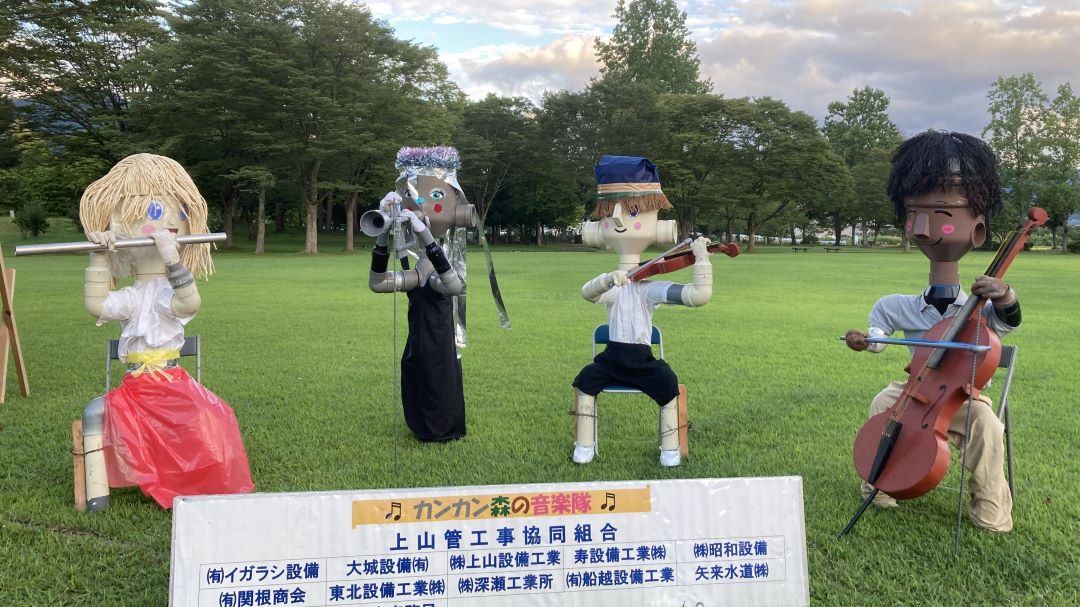
Kakashi Festinal (Scarecrow Festival)
The "Scarecrow Festival" began more than 50 years ago when students
from Kaminoyama Agricultural High Scool, the predecessor ofKaminoyama Meishinkan
High School, competed to decorate rice fields with "scarecrows".
It has been inherited as the culture of Kaminoyama City. Humorous handmade
scarecrows wil be exhibited.
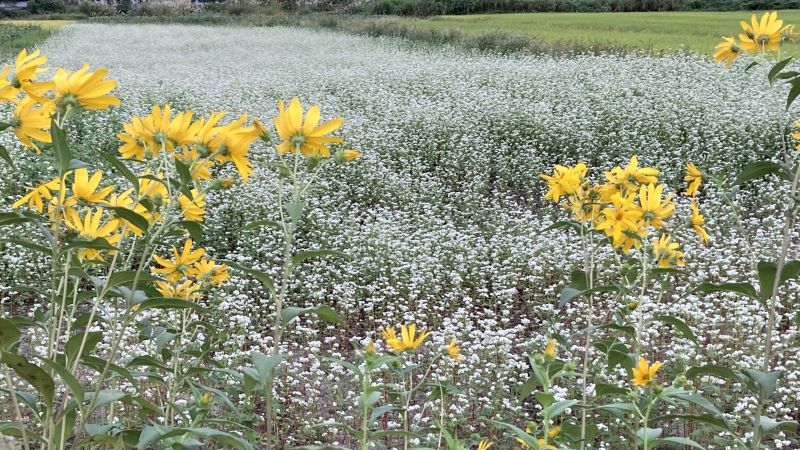
Soba Field
There is a season when the white flowers of the buckwheat fields stand
out in the city. The specialty "Soba" nurtured by the climate
of Kaminoyama has a rich flavor. The secret to its deliciousness lies in
its chewy texture and smooth texture.
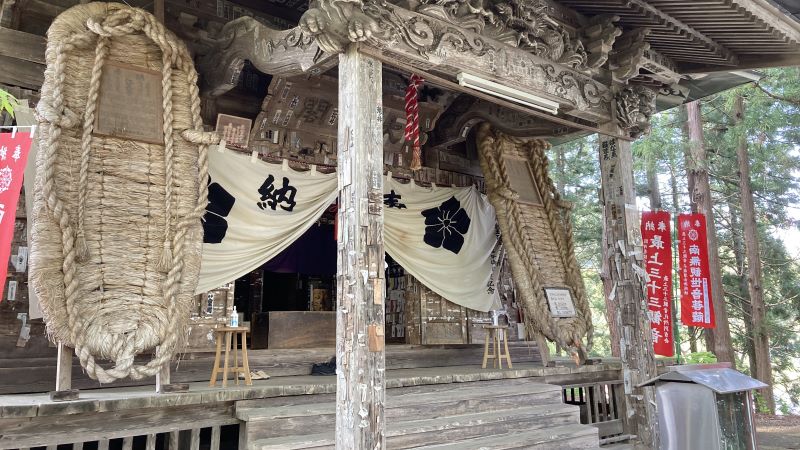
Takamatsu Kannon Temple
When Gyoki built a small hermitage in the village of Takamatsu and lived
here for a while, he carved a statue of Kannon and had people worship it.
The miracle of this Kannon reached the ears of the forty-fifth Emperor
Shomu, who designated it as a place of prayer. Since then, there have been
many worshipers, from feudal lords to ordinary people. The faith of the
lord of the time was strong, and some people donated the land for the temple,
and after Matsudaira family became the lord of Kaminoyama, they donated
30 koku to this Kannon as a sacred place to protect the castle and protect
the country. They sent envoys to the shrine and paid tribute to the shrine.
Kurikawa Inari Shine
Kurikawa Inari Shrine is the guardian deity of the Fujii-Matsudaira family,
and a deity that has been deeply worshiped by successive castle lords.
THe tunnel-like torii were dedicated by believers. The shrine is said to
bring good luck in matchmaking, prosperous business, and financial fortune.
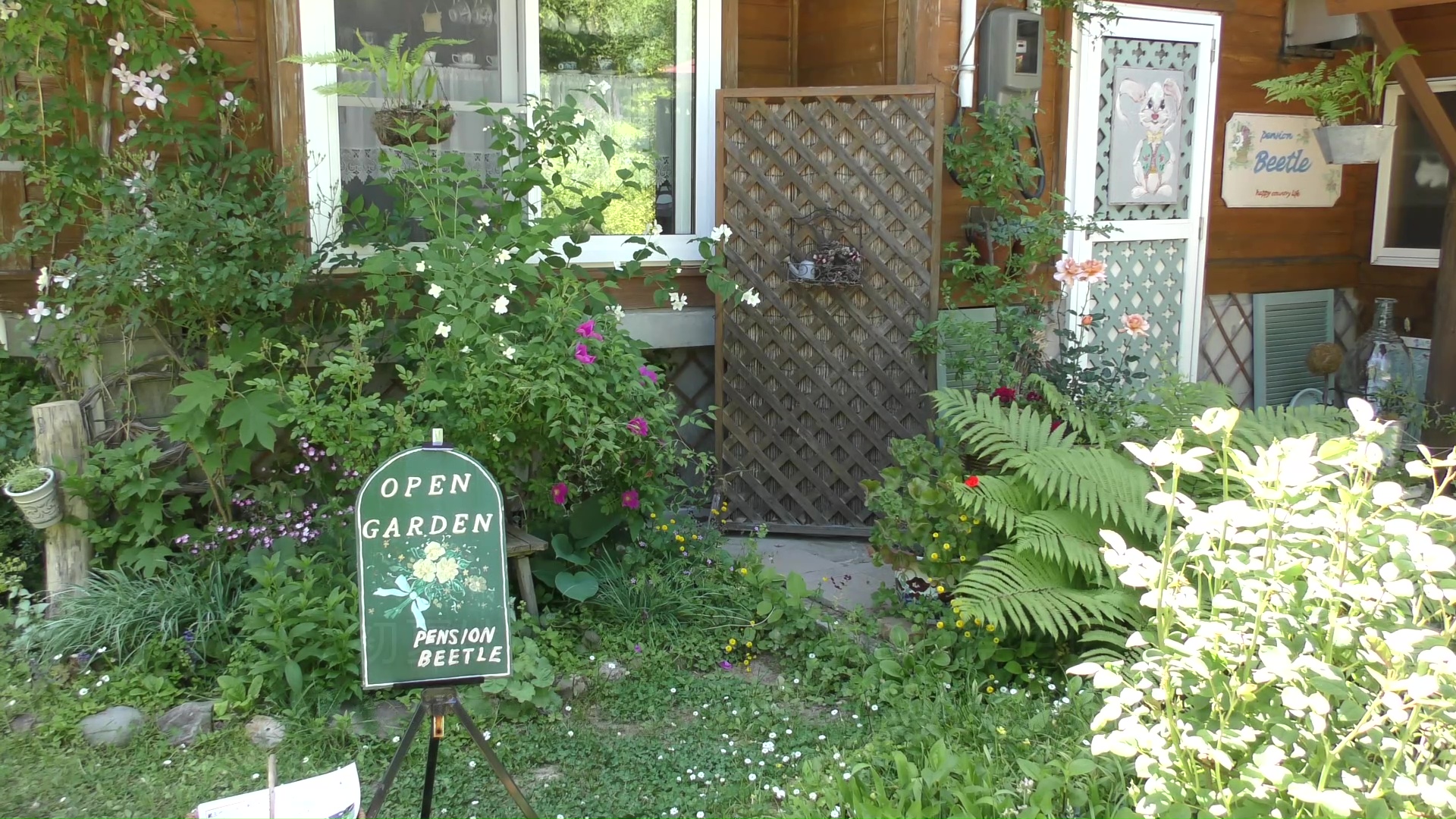
Open Garden
Zao Pension Village opens its garden to the public from spring to summer
and autumn every year. It's fun to stroll throught the gardens in the pension
village, where the refreshing highland breeze blows. There are also pensions
that offer lunch and cafe menus, and sell flower seedings and miscellaneous
goods.
・A garden in the mountains from spring to early summer :
Late May to early July
・Mountain autumn garden:
Late September to early October